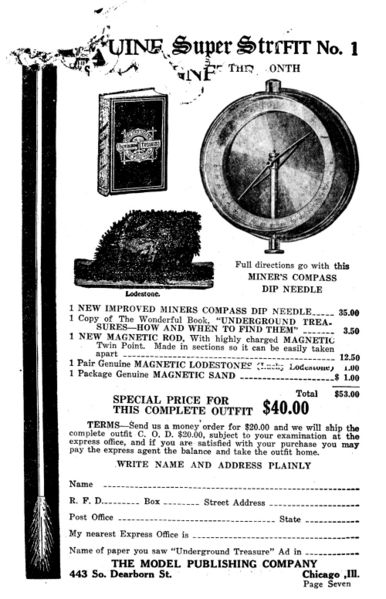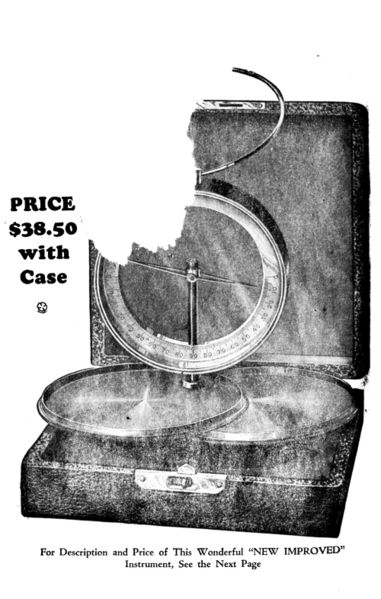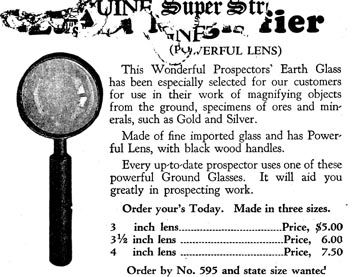 |
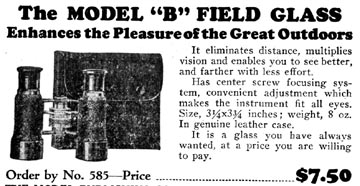 |
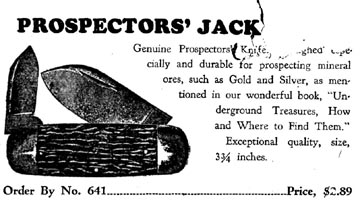 |
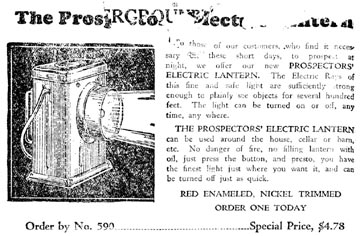 |
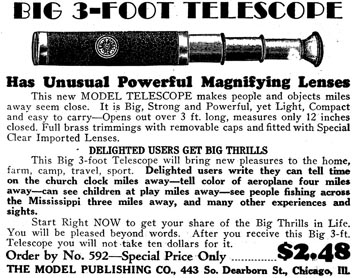 |
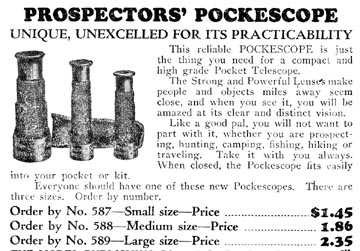 |
While Model Publishing Company had their bundles, they did include a number of useful tools for the prospector — tools actually identified in the books as things to bring while prospecting. Despite the examination of small objects required for prospecting, distance-viewing has a inordinate emphasis here: a ‘pocketscope’ (a small telescope), a 3-foot telescope, and field glasses. The pocketknife and magnifying glass are about the most useful of any of the tools advertised in the catalog, but as they’re not exactly the most difficult tools to acquire, weren’t prominently featured in the catalog.
One amazing tool, my favorite, is seen here:
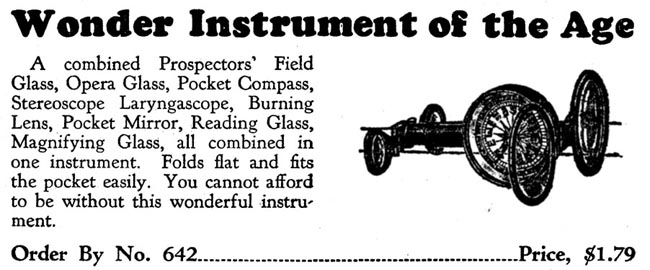
The Wonder Instrument of the Age is numerous things, all wrapped into one: A Prospectors’ Field Glass, Opera Glass, Pocket Compass, Stereoscope Laryngascope, Burning Lens, Pocket Mirror, Reading Glass, and Magnifying Glass, all combined in one instrument.
A Stereoscope Laryngascope? Unless the prospector is moonlighting as a doctor, I can’t imagine why a tool to look down someone’s throat could possibly be a selling point. A master of synonyms will quickly notice that the majority of these myriad of tools are lensed tools — magnifiers of some sort, whether two lenses paired for long distance or a single lens for magnifying small objects. Still, I could see the usefulness of such a compact, functional object, and it shouldn’t surprise anyone that younger relatives of the Wonder Instrument of the Age are still being manufactured today.
